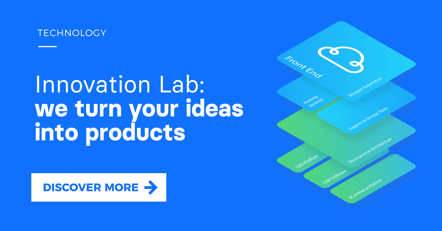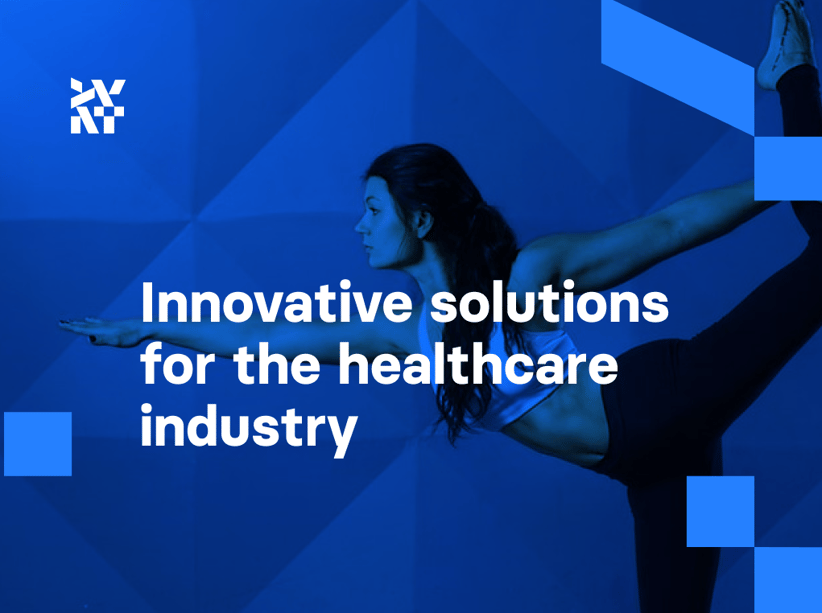Healthcare systems have been strained and tested more than ever before. In many ways, they have answered the call but 2020 has highlighted the need for innovative solutions for the healthcare industry that will help hospitals, health centers, and pharmacies provide continued high-quality care.
Healthcare costs have been rising faster than inflation for decades. Some forecasts predict that healthcare costs will grow from 17.5% of GDP in 2014 to a staggering 20.1% by 2025. Doctors and medical staff are working harder than ever before but, in the US, for example, the shortage of qualified physicians continues to grow.
Healthcare systems are sprawling, multi-faceted entities that are critical to human life. Reducing spending is a huge challenge when equipment costs a great amount and institutions can employ thousands of staff. It’s a complex issue but there are some innovative solutions for the healthcare industry that can help address some of the critical issues and move things forwards.
Telehealth and telemedicine
Telemedicine is a part of telehealth, a broader category of technologies and services designed to improve healthcare delivery. Telemedicine involves clinical services provided remotely through solutions such as video calls. Telemedicine is not something new, but due to the COVID-19 pandemic, it has become one of the top healthcare solutions.
Telehealth helps to prevent the spread of coronavirus and other infectious diseases. It can improve diagnosis and treatment and offers more convenient access to specialists. It helps patients look after their health while reducing office visits and travel time. It’s one of the most significant sources of rapid change in the U.S. healthcare system, where access to providers is limited and wait times are getting longer.
Many patients were initially resistant to telehealth, due to concerns over privacy and received levels of care. However, the estimated number of telemedicine patients worldwide grew steadily, from 0.35 million in 2013 to 7 million in 2018, and is set to increase exponentially in the current global climate.
“For health care organizations looking to implement or expand telehealth, it is important to note that simply giving consumers more access to care doesn’t automatically translate to improved outcomes. But, organizations have shown that through a targeted approach, especially to certain high-risk populations covered under VBC models, telehealth programs can be cost-effective”
Top 10 Healthcare Innovations report by Deloitte.
A disruptive approach to clinical trials
Clinical trials are the way to market for all new treatments and medical devices. However, they are challenging to organize and expensive and a lack of enrollment from test subjects can cause significant delays or even cause entire companies to close down.
Remote clinical trials are among the more simple innovations in the healthcare industry but they are incredibly effective. Patients can join remote trials using smartphones or wearable devices, which collect data remotely and feed it back to the lab. What’s more, remote trials open up possibilities such as monitoring and comparing patients in different locations, to see how environmental and social factors affect results.
Patient engagement
The days of “the doctor always knows best” are gone, whether doctors like it or not. Patients are increasingly health-conscious and are more ready to discuss potential diagnoses, symptoms, and treatments. The recent boom in at-home genetic testing helps patients understand which conditions they might be at risk and how to prevent them.
The data confirm this. The global patient engagement solutions market is expected to grow at a compound annual rate of 16.2% over the next five years. It will reach 18.7 billion USD in 2022, according to MarketsandMarkets.
These days, patients have a significant influence on their health outcomes. Companies have to work on achieving greater patient engagement. Reports state that patient engagement tools can enhance communication and improve outcomes while reducing costs. Problems of data security and lack of interoperability may prevent the market from reaching its full potential but concerted efforts are slowly making headway.
Pharmacy of the Future
The healthcare industry is, understandably, strictly regulated and resistant to change. Patient records are extremely sensitive personal data, meaning that security is a prime concern. Also, access to potentially harmful medicines needs to be stringently controlled. The end result is a number of closed technological systems, as everyone takes care to protect data at all costs.
However, the pace of technological change is moving faster than regulations and patient expectations are starting to change. As people become more informed and health-conscious, they start to treat the industry like any other and question why there is no mobile app or system linking the doctor’s diagnosis to automatic ordering in the pharmacy. And for patients who cannot leave the home, how is the healthcare industry approaching the last mile and offering delivery?
Changing laws needs prudent oversight and is not a fast process. However, we have already designed and described the Pharmacy of the Future—a mobile application that links doctors, patients, pharmacies, suppliers, and delivery companies, to create an entire in-app patient care ecosystem.
Read more in our Pharmacy of the Future concept case study
Artificial Intelligence
Artificial Intelligence (A.I.) is one of the most powerful tools in the healthcare industry. It adds speed and accuracy to complex analyses while reducing costs. Speed is a particularly important factor in an industry where we are not just talking about “time to market” but “time to cure”.
Every year, more than 2 million peer-reviewed research papers are published. It impossible for any human to get through even a fraction of this data, which is where BenevolentAI comes to the fore.
“BenevolentAI has created algorithms that scour research papers, clinical trial results, and other biomedical information sources in search of previously overlooked relationships between genes, drugs, and disease”
Corinne Purtill, time.com.
Healthcare systems need help with cutting costs. Athelas utilizes machine learning and computer vision to identify morphology and characterize cell types from a tiny blood sample taken from the tip of a finger.
“Clinicians and health plans can save thousands of dollars annually per patient by reducing hospitalizations, detecting adverse events earlier from frequent Athelas tests, and by keeping patients safely compliant on necessary therapeutics.”
Athelas CEO, Tanay Tandon.
A.I. has also proven to be more accurate than human doctors in some cases, with Google A.I. outperforming doctors for certain types of breast cancer detection in 2020.
“A.I. improves decision accuracy by separating signals from noise and keeping us focused on the future. For example, it can help us more accurately answer questions such as, ‘is this recent uptick in COVID-19 positive tests a signal that we need to postpone non-emergency procedures?'”.
Top 10 health care innovations report by Deloitte.
Big Data
Getting enough data to find the right treatment is one of the biggest challenges for creating new drugs and medicines for rare diseases. Big Data can solve that problem. Healthcare startup RDMD analyzes data from medical records to find commonalities in rare disease cases.
RDMD aggregates and analyzes medical records and sells the de-identified data to pharmaceutical companies to develop medicines. In exchange for access to the data, patients get their fragmented medical records organized into an app that they can use to track their treatment and get second opinions. The startup’s story shows that Big Data can help find better treatments, and do it faster.
Another exciting example is Evidation, a California-based Big Data company that has developed a tool which utilizes information from 3 million volunteers who provide trillions of data points. That data is later parsed by drug manufacturers like Sanofi and Eli Lilly. Their work has already led to dozens of peer-reviewed studies. The range of subjects is exciting and essential: from sleep and diet to cognitive-health patterns.
Biosensors / Digital biomarkers
Biosensors or digital biomarkers are innovative solutions for the healthcare industry, such as fitness bands and smartwatches, which track data points. CCS Insights predicts 411 million wearable devices, ranging from eyewear to watches to jewelry, to be sold in 2020. Such devices continuously measure blood pressure, heart rate, physical activity, sleep quality, or glucose levels. Wearables have become smaller and less intrusive over time, so people are more likely to accept them. Some believe that wearables will become so small that they will “disappear” from consumers’ awareness.
From a medical point of view, data collected by wearables can be used to assess health and predict risks. Biosensors/digital biomarkers have numerous applications, including choosing the right treatment or explaining a particular disease. Much of the data is already assembled and other information can be easily managed by creating custom software.
“Profusa is developing tissue-integrated sensors to help individuals continuously monitor their body chemistry. The Lumee biosensor is made of a material similar to a contact lens and is integrated into the body’s tissue. An external optical reader tracks signals from the biosensor and sends the data to a smartphone. Applications will focus on peripheral artery disease initially, with plans to expand to diabetes, chronic obstructive pulmonary disease, wellness, and general fitness.”
Top 10 Healthcare Innovations Report by Deloitte.
Conclusion
Healthcare systems are changing quickly. The COVID-19 pandemic has been a catalyst but it is not the underlying reason for either the problems in the healthcare industry or the push towards innovation. Healthcare systems are affected by employee shortages, rising costs, growing patient expectations, etc. Technology is now offering up innovative solutions for the healthcare industry which can positively impact both patient health and business results.
The Divante Innovation Lab is a sandbox for innovation. Each quarter, our experts focus on one industry and look for ways to push it forwards. We’ve turned our expertise to designing innovative solutions for the healthcare industry and designed and delivered both bold concepts and market-ready applications. If you have an idea for helping doctors, patients, and business, contact us to see how we can quickly validate the concept and outline a path to get to market.

Published September 15, 2020











